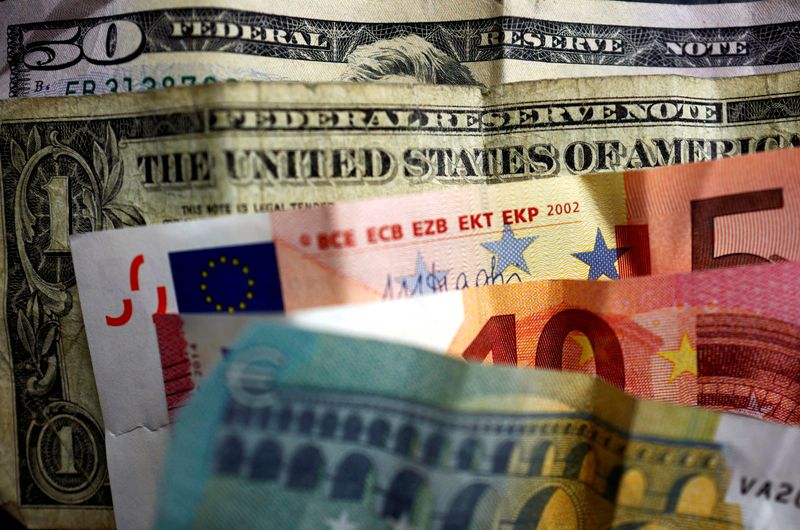Table of Contents
In an astonishing turn of events, the seemingly impregnable fortress of international sanctions has been breached, with Russia reportedly receiving a staggering $2.3 billion in dollar and euro banknotes since the onset of the Ukraine invasion in 2022. These cash injections have defied U.S. and EU sanctions that were meant to freeze Russia out of the global financial system, raising alarming questions about the true efficacy of these economic measures.
A Sanctions-Evading Spectacle
Customs data, stealthily obtained by Reuters from a commercial supplier, unveils a shadowy world where cash flows to Russia like water under a cracked dam. The sources of these funds? Countries like the UAE and Turkey, which have so far resisted joining the West in its punitive stance against Moscow. What’s more, over half of these transactions shroud their origins in mystery, a cloak of secrecy that hints at a broader and more intricate network of financial subterfuge.
The U.S. government, standing on its diplomatic soapbox, has threatened retribution against any financial institutions aiding Russia in this sanctions-dodging act. Yet, despite the bark, there’s little evidence of a bite. Sanctions continue to be imposed, but Russia, it seems, is playing a different game, one where hard currencies like the dollar and euro are still prized, particularly by ordinary citizens seeking financial stability in an increasingly unstable world.
Dmitry Polevoy, a financial sage at Astra Asset Management in Russia, captures the sentiment of many: “For individuals, the dollar is still a reliable currency.” The reverence for the greenback persists, even as the Kremlin labels it “toxic,” a paradox that encapsulates the contradictory nature of Russia’s current economic reality.
The Quiet Insurgency of the Yuan
While the West focuses on the dollar and euro, another currency has quietly risen to prominence in Moscow’s markets: China’s yuan. This shift signals not just a diversification but a deliberate pivot away from Western financial influence. Still, it’s not without its challenges—payment issues abound, and the road to full reliance on the yuan is fraught with obstacles.
An Eerie Silence from Authorities
As these cash flows continue unabated, the powers that be remain conspicuously silent. Russia’s central bank has offered no comment, nor has the U.S. sanctions watchdog, the Office of Foreign Assets Control (OFAC). Meanwhile, the European Commission has washed its hands of responsibility, merely stating that it cannot comment on individual sanctions cases.
Pre-War Panic: A Prelude to Sanctions
Intriguingly, the data reveals a massive surge in cash imports just before the invasion—$18.9 billion in dollar and euro banknotes flooded into Russia between November 2021 and February 2022. This spike suggests that some in Russia foresaw the storm to come and sought to cushion the blow, anticipating the sanctions that would soon follow.
Daniel Pickard, a seasoned expert in international trade and national security at Buchanan Ingersoll & Rooney, aptly summarizes the situation: “While the U.S. and its allies have learned the importance of collective action in maximizing economic consequences, Russia has been learning how to avoid and mitigate those same consequences.” His words echo a chilling truth: the data likely underrepresents the actual flow of foreign currency into Russia, hinting at an even larger, unseen network of financial maneuvering.
Gold, Arms, and Banking: A Dark Triad
Amidst the murky waters of these transactions, the records also reveal a disturbing exchange of cash for precious metals. Several Russian banks, in a sinister dance with foreign partners, imported $580 million in banknotes and exported equivalent amounts of gold and silver. The most notable player? Vitabank, a Russian lender that orchestrated a series of cash-for-gold trades with Turkish firm Demas Kuyumculuk. This was not merely business as usual; it was a desperate measure to honor pre-war contracts without violating sanctions, a perilous balancing act that underscores the complexity of global financial interactions in a time of geopolitical strife.
But the dark web of transactions doesn’t end there. Rostec, the Russian state-owned military-industrial titan, has also been a major importer of foreign cash. Under U.S. sanctions since 2014, Rostec’s involvement adds a menacing dimension to these revelations, suggesting that this influx of hard currency may be fueling more than just civilian economic activity.
The Future of Sanctions: A Question Mark
With these revelations, the efficacy of sanctions as a tool of international policy comes into question. The sheer volume of cash flowing into Russia—despite the global community’s best efforts—suggests that the Kremlin has not only weathered the storm but may be turning it to its advantage. As the West grapples with how to close these loopholes, one thing is clear: in the shadowy world of international finance, nothing is as it seems, and the battle to contain Russia’s economic power is far from over.

